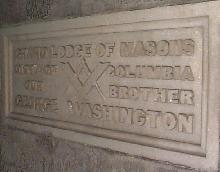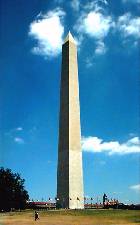William Wallace Dudley was born in 1851 in St. John, New Brunswick, Canada. He became interested in horology at the age of 13 and became an apprentice to a maker of ship chronometers. After completing his apprenticeship, he moved to the United States.
Dudley moved around from one watch factory to another gaining knowledge and experience.
Over the years Dudley had viewed many watch designs including those of M. Tobias & Co. (England), which incorporated two Masonic symbols in the workings of the watch. Dudley was deeply interested in Freemasonry, and was a member of both the York and Scottish Rites, the Nobles of the Mystic Shrine and the Tall Cedars of Lebanon.
In 1918, Dudley began work on the production of a Masonic watch with its bridge plate in the form of Masonic symbols (a slipper, plumb, trowel, level, square, compass, the letter G. and a Bible). The plates were machined by his friend, Willis R. Michael, also a Freemason. Dudley later applied for and was granted patents for the Masonic plate design dated June 29, 1923. According to his daughter, Dudley had been planning his Masonic watch for 15 to 20 years prior to being granted the patent for the design.
On February 9, 1938 Dudley died at Lancaster, Pennsylvania. He never lived to see the Dudley Masonic Watch become a valuable, sought after collector's item.
~~~~~
Dudley Masonic Watch
Identification Keys
Model 1) 14-size, 19 jewel, open face, "Holy Bible" engraved on winding arbor plate. Exposed winding pinion. Gilded pallet bridge matching the plates.
Model 2) 12-size, 19 jewel. Uses Hamilton 910/912 train and escapement. Flat silver-colored Bible covers winding arbor.
Model 3) 12-size. 3-dimensional silver-colored Bible riveted in place. Third wheel bridge rounded on one end.
Dudley Masonic Watch.
Approximate Serial Numbers and Production Dates
Years S/N
1920 - 1925 Dudley Watch Co. 500 - 1900
1925 - 1935 P. W. Baker Co. 2001 - 4800
1935 - 1976 XL Watch Co, NY 4801 - 6500
IMPORTANT: Be sure to use the serial number on the movement (the works) of the watch.
Do not use the serial number from the case.
Dudley moved around from one watch factory to another gaining knowledge and experience.
Over the years Dudley had viewed many watch designs including those of M. Tobias & Co. (England), which incorporated two Masonic symbols in the workings of the watch. Dudley was deeply interested in Freemasonry, and was a member of both the York and Scottish Rites, the Nobles of the Mystic Shrine and the Tall Cedars of Lebanon.
In 1918, Dudley began work on the production of a Masonic watch with its bridge plate in the form of Masonic symbols (a slipper, plumb, trowel, level, square, compass, the letter G. and a Bible). The plates were machined by his friend, Willis R. Michael, also a Freemason. Dudley later applied for and was granted patents for the Masonic plate design dated June 29, 1923. According to his daughter, Dudley had been planning his Masonic watch for 15 to 20 years prior to being granted the patent for the design.
On February 9, 1938 Dudley died at Lancaster, Pennsylvania. He never lived to see the Dudley Masonic Watch become a valuable, sought after collector's item.
~~~~~
Dudley Masonic Watch
Identification Keys
Model 1) 14-size, 19 jewel, open face, "Holy Bible" engraved on winding arbor plate. Exposed winding pinion. Gilded pallet bridge matching the plates.
Model 2) 12-size, 19 jewel. Uses Hamilton 910/912 train and escapement. Flat silver-colored Bible covers winding arbor.
Model 3) 12-size. 3-dimensional silver-colored Bible riveted in place. Third wheel bridge rounded on one end.
Dudley Masonic Watch.
Approximate Serial Numbers and Production Dates
Years S/N
1920 - 1925 Dudley Watch Co. 500 - 1900
1925 - 1935 P. W. Baker Co. 2001 - 4800
1935 - 1976 XL Watch Co, NY 4801 - 6500
IMPORTANT: Be sure to use the serial number on the movement (the works) of the watch.
Do not use the serial number from the case.
— with Thorsten Philippi and My Dudley.

 The first Masonic stone ascending the Monument is that of the Grand Lodge of the District of Columbia at the 50 foot landing. This earliest Masonic contribution was no doubt tied into the cornerstone laying ceremony where the Grand Lodge of D.C. presided. The United States National Park Service has a very extensive and interesting section of the Memorial's
The first Masonic stone ascending the Monument is that of the Grand Lodge of the District of Columbia at the 50 foot landing. This earliest Masonic contribution was no doubt tied into the cornerstone laying ceremony where the Grand Lodge of D.C. presided. The United States National Park Service has a very extensive and interesting section of the Memorial's Whether or not Society Secretary John Carrol Brent was moved by the letter from the Lodge in Roxbury, Massachusetts, he began to again send solicitations to Masonic bodies and other fraternal orders. Between July and September 1874 over two hundred pledges were received by the Society from every part of the country, chiefly from the Masons, Odd Fellows, Knights of Pythias, Red Men, and other fraternal bodies. On April 15, 1875, 211 Masonic lodges across the country responded to Brent's call including four Grand Lodges (Florida, Illinois, Massachusetts and Ohio, the last three giving $1000 each). The average lodge gave between 10 and 50 dollars. Mithras Lodges of Perfection, A.A.S.R, Washington D.C. made a contribution as did 24 Royal Arch Chapters and 5 Commandaries.
Whether or not Society Secretary John Carrol Brent was moved by the letter from the Lodge in Roxbury, Massachusetts, he began to again send solicitations to Masonic bodies and other fraternal orders. Between July and September 1874 over two hundred pledges were received by the Society from every part of the country, chiefly from the Masons, Odd Fellows, Knights of Pythias, Red Men, and other fraternal bodies. On April 15, 1875, 211 Masonic lodges across the country responded to Brent's call including four Grand Lodges (Florida, Illinois, Massachusetts and Ohio, the last three giving $1000 each). The average lodge gave between 10 and 50 dollars. Mithras Lodges of Perfection, A.A.S.R, Washington D.C. made a contribution as did 24 Royal Arch Chapters and 5 Commandaries.



